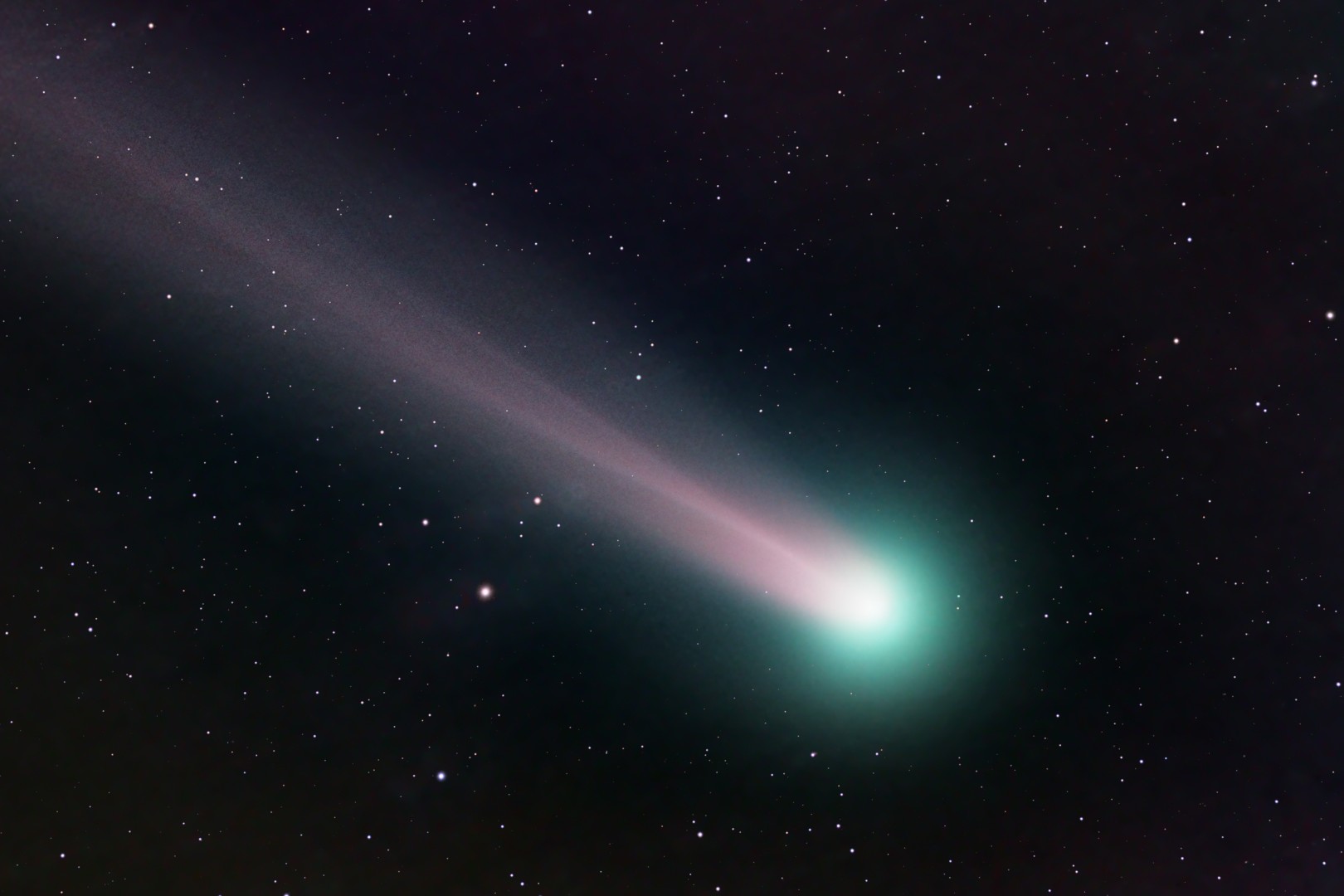
Comets are some of the most fascinating objects in our solar system. These icy wanderers have captivated human curiosity for centuries, appearing as bright, glowing streaks in the night sky. But what exactly are they? Comets are essentially cosmic snowballs made of frozen gases, rock, and dust. When they get close to the Sun, they heat up and release gases, forming a glowing head and often a spectacular tail. Did you know that some comets take hundreds or even thousands of years to complete one orbit around the Sun? Or that the famous Halley's Comet is visible from Earth every 76 years? Dive into these 25 amazing facts about comets to learn more about these celestial wonders!
What Are Comets?
Comets are fascinating celestial objects that have intrigued humans for centuries. These icy bodies travel through space, leaving behind spectacular tails when they approach the Sun. Let's dive into some intriguing facts about comets.
-
Comets are often described as "dirty snowballs" because they are made of ice, dust, and rocky material.
-
The nucleus of a comet is typically only a few kilometers across, but the coma (the cloud of gas and dust surrounding the nucleus) can be thousands of kilometers wide.
-
When a comet gets close to the Sun, the heat causes the ice to vaporize, creating a glowing coma and sometimes a tail.
-
Comet tails always point away from the Sun due to the solar wind and radiation pressure.
Famous Comets
Throughout history, some comets have become famous due to their spectacular appearances or unique characteristics.
-
Halley's Comet is perhaps the most famous comet. It appears approximately every 76 years and was last seen in 1986.
-
Comet Hale-Bopp, discovered in 1995, was visible to the naked eye for a record 18 months.
-
Comet Shoemaker-Levy 9 gained fame when it collided with Jupiter in 1994, providing valuable data on the planet's atmosphere.
-
Comet NEOWISE, discovered in 2020, was one of the brightest comets visible from Earth in recent years.
Comet Origins
Understanding where comets come from helps scientists learn more about the early solar system.
-
Most comets originate from the Kuiper Belt, a region of the solar system beyond Neptune filled with icy bodies.
-
Some comets come from the Oort Cloud, a distant spherical shell surrounding the solar system.
-
The Oort Cloud is thought to contain billions of comets, but it has never been directly observed.
-
Comets from the Kuiper Belt are called short-period comets, while those from the Oort Cloud are long-period comets.
Comet Exploration
Space missions have provided valuable insights into the nature of comets.
-
The European Space Agency's Rosetta mission was the first to orbit and land on a comet, 67P/Churyumov-Gerasimenko, in 2014.
-
NASA's Stardust mission collected samples from the coma of Comet Wild 2 and returned them to Earth in 2006.
-
The Deep Impact mission intentionally crashed a probe into Comet Tempel 1 in 2005 to study its composition.
-
Japan's Hayabusa2 mission, although primarily focused on asteroids, also provided data on comet-like bodies.
Cometary Impacts
Comets have played a significant role in shaping the history of our planet and others.
-
Some scientists believe that comets may have delivered water and organic molecules to early Earth, contributing to the development of life.
-
The Chicxulub impact, which caused the extinction of the dinosaurs, was likely caused by a comet or asteroid.
-
Comet impacts on Jupiter have been observed multiple times, showcasing the planet's role as a "cosmic vacuum cleaner."
-
The Tunguska event in 1908, which flattened a large area of Siberian forest, is thought to have been caused by a comet or asteroid explosion in the atmosphere.
Cometary Mysteries
Despite extensive research, many aspects of comets remain mysterious.
-
The exact composition of cometary nuclei is still not fully understood, as they are difficult to study directly.
-
The formation of comet tails involves complex interactions between solar radiation, solar wind, and the comet's material.
-
Some comets exhibit unusual behavior, such as splitting into multiple fragments or suddenly brightening without apparent cause.
-
The role of comets in the broader context of the solar system's evolution is still a topic of active research.
-
Future missions and observations will continue to unravel the mysteries of these enigmatic celestial travelers.
The Final Word on Comets
Comets have fascinated humans for centuries. These icy wanderers from the outer reaches of our solar system hold secrets about the early days of our cosmic neighborhood. From their glowing comas to their spectacular tails, comets are a reminder of the dynamic and ever-changing nature of space. They’ve been linked to historical events, inspired myths, and even sparked scientific revolutions. Understanding comets helps us learn more about the origins of water on Earth and the building blocks of life. So next time you spot one streaking across the sky, remember the incredible journey it’s been on. Whether you're a stargazer or a science enthusiast, comets offer a glimpse into the mysteries of the universe. Keep looking up; you never know what wonders you might see.
Was this page helpful?
Our commitment to delivering trustworthy and engaging content is at the heart of what we do. Each fact on our site is contributed by real users like you, bringing a wealth of diverse insights and information. To ensure the highest standards of accuracy and reliability, our dedicated editors meticulously review each submission. This process guarantees that the facts we share are not only fascinating but also credible. Trust in our commitment to quality and authenticity as you explore and learn with us.
